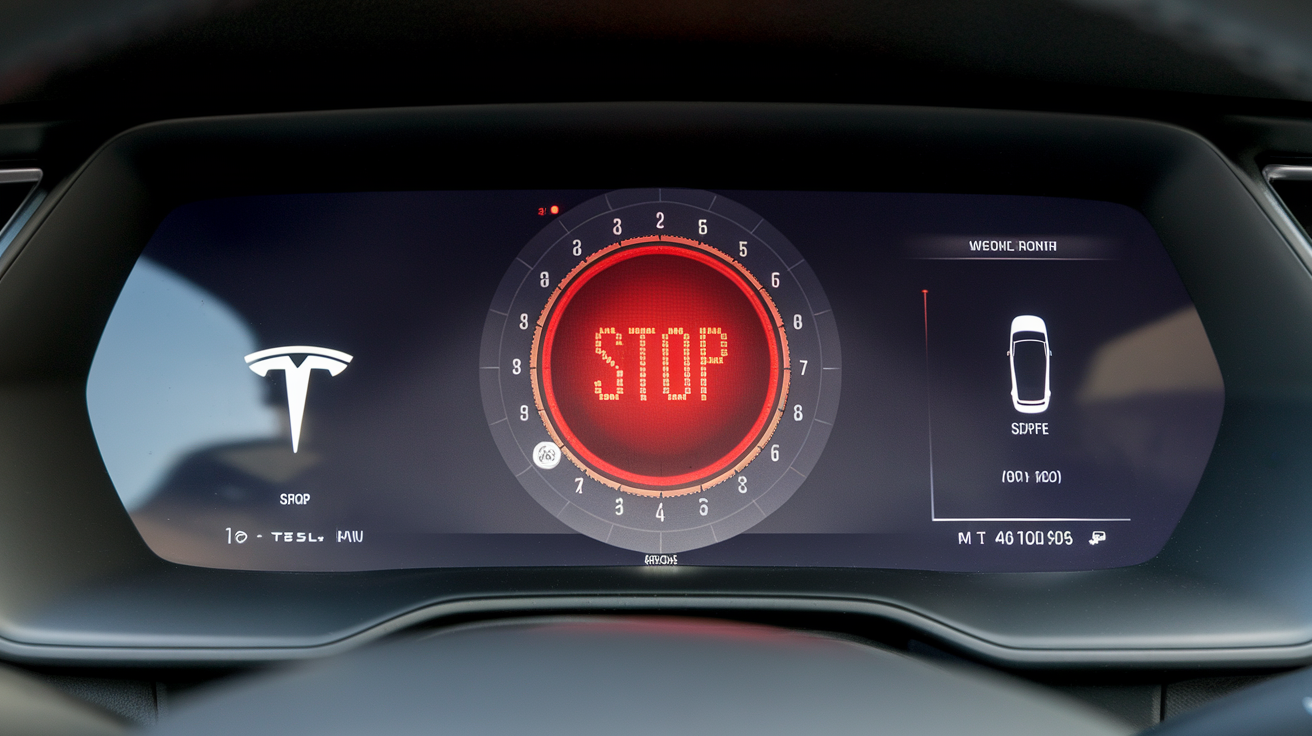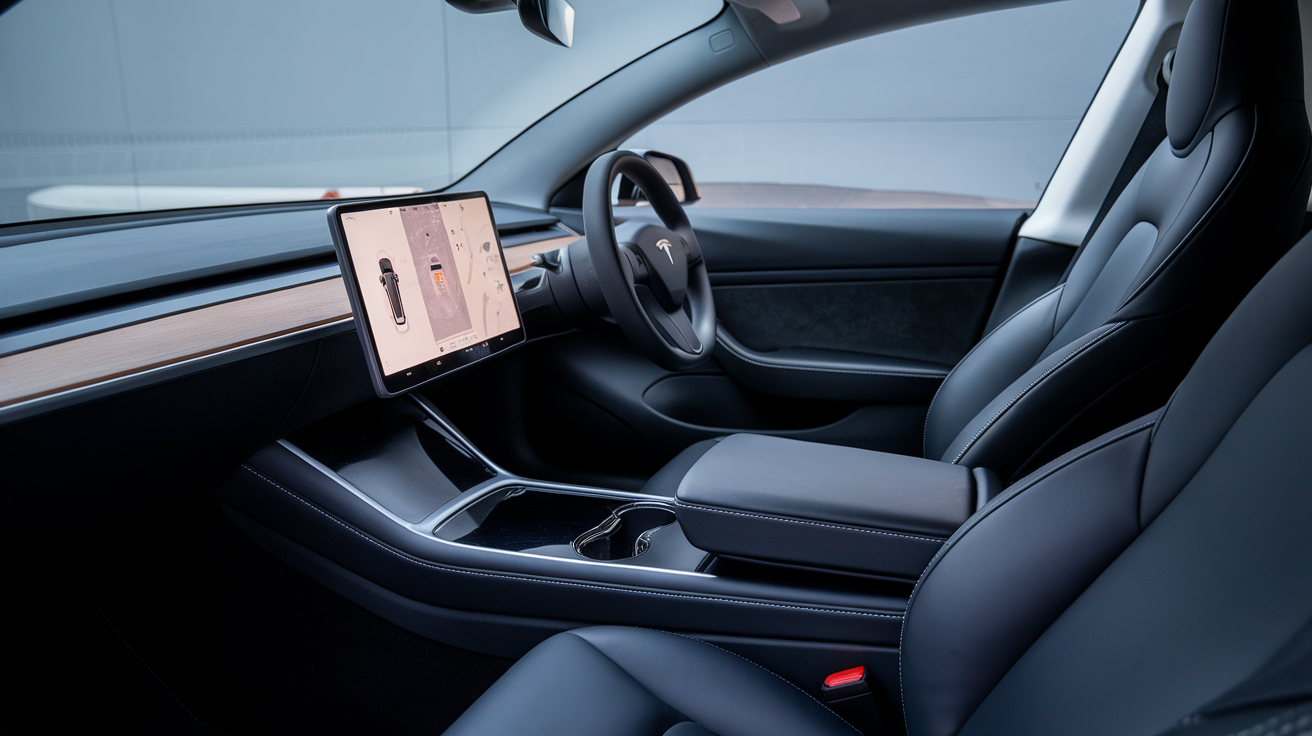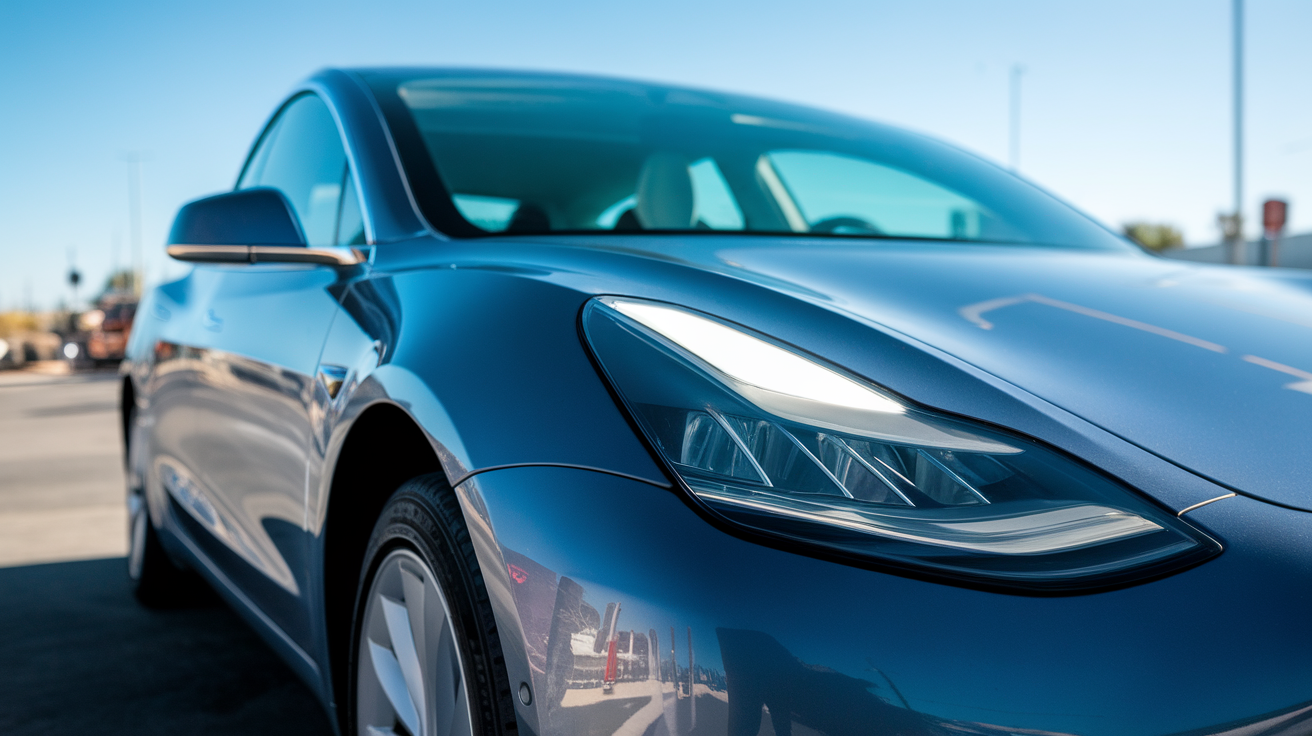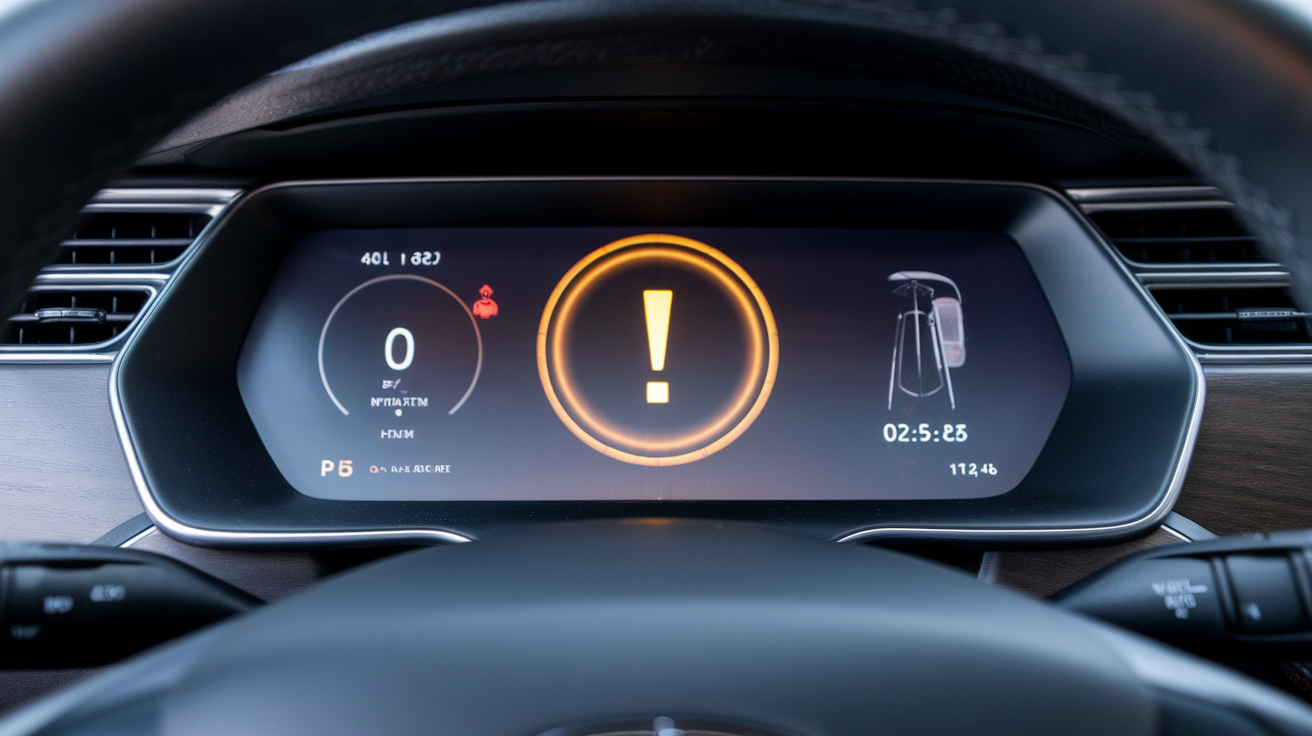Why Your Tesla Brake Warning Light Comes On Suddenly
Why does your Tesla suddenly flash a brake warning while everything feels fine? It is not just a random glitch. In Dubai’s heat, alerts like regenerative braking error, low brake fluid, or a brake booster fault can appear without notice especially after a recent software update. Some Tesla models, like the Model 3, have shown this light even with no real mechanical issue. But ignoring it can lead to serious brake system trouble. This blog explains the real reasons behind the Tesla brake warning light and what steps to take before a small alert turns into a big repair.
Should You Be Worried About That Brake Light?
Should you be worried when your Tesla brake warning light comes on suddenly? Honestly, yes especially if you are driving in Dubai’s harsh heat. That red or amber light is not just for show. It could mean your brake fluid is low, the regenerative braking system is limited, or worse, there’s a fault in your brake booster. Some alerts come and go, triggered by temporary conditions or a recent Tesla software update, but others are tied to actual hardware issues. Ignoring it can affect your car’s braking performance and put your safety at risk.
This issue is more common than most Tesla drivers expect. Whether you drive a Model 3, Model Y, or even a Model S, sudden brake alerts are often linked to sensor glitches, especially during software rollouts. In rare cases, Dubai’s heat can even impact how the regenerative system responds, which might trigger warnings you have never seen before. The key is knowing when it is just a system check and when it is a real mechanical fault. This guide explains what the Tesla brake warning light actually means, what causes it, and when you should take immediate action.

How the Tesla Brake Warning Light Actually Works
The Tesla brake warning light is more than just a dash icon, it’s a direct message from your car’s onboard system telling you something needs attention. Depending on whether the light is red or amber, the meaning can change completely. A red brake warning often points to serious issues like low brake fluid, hydraulic pressure loss, or a failure in the brake booster system. If it’s amber, it could be a less critical fault like a regenerative braking limitation or a sensor glitch caused by a software update.
What makes Tesla unique is how software plays a big role in the braking system. Unlike traditional cars, Tesla uses real-time data from wheel speed sensors, regen systems, and firmware updates to monitor braking performance. That means even a minor communication error between modules can trigger a warning light even if your brakes feel fine. But not every alert is harmless. If the Tesla brake system warning appears while driving, especially in stop-and-go Dubai traffic, it is important to understand what triggered it and how your model reacts.
Common Reasons the Brake Warning Light Comes On Suddenly
One minute you’re cruising, the next, your Tesla brake warning light flicks on with no warning. No grinding sounds, no pedal softness, just that light staring back at you. It’s not random. Teslas are smart, but even smart cars throw alerts when something’s off. And in a city like Dubai, with sudden braking, high heat, and stop-and-go traffic, these warnings aren’t rare. Let’s break down what might really be going on under the hood or behind the screen.
- Software Bug or Glitch After a Recent Update
Tesla’s over-the-air updates are fast, but not always flawless. A known bug after some updates causes false brake pad warnings or inconsistent regen braking errors, especially on Model 3 and Model Y. - Regenerative Braking Disabled
When the battery is either too cold, too full, or managing power poorly, regenerative braking can get disabled. That change triggers a regen braking Tesla error, especially when transitioning from soft stops to hard brakes. - Brake Fluid Level Too Low
A drop in brake fluid even slightly below the sensor threshold, can cause the warning. It doesn’t always mean a leak; it could be wear in your brake pads reducing fluid volume in the system. - Sensor Failures
Faulty wheel speed sensors, pedal position sensors, or even a glitch in the ABS module can confuse the system. These misreads trigger alerts even when there’s no mechanical failure. - Worn Brake Pads or Rotor Surface Issues
Dubai’s heat accelerates pad wear. If sensors detect thin pads or uneven contact with rotors, the system throws a brake pad warning Tesla alert, even before you hear a squeak. - ABS System Malfunction
A fault in the anti-lock braking system will immediately flag a critical Tesla brake fault. It’s rare but serious especially if you’ve felt pulsing or sudden brake grabs. - Heavy Braking on Autopilot or After Sudden Deceleration
Tesla’s autopilot logic occasionally slams brakes harder than needed. This can throw the system off and trigger warnings, especially after high-speed deceleration in short bursts.
These issues are not always visible, which makes them tricky. But when your Tesla brake light comes on suddenly, it is your car’s way of telling you something is not right whether it’s minor or serious.

Which Tesla Models Face the Most Brake Warning Issues?
Not all Teslas are built the same when it comes to brake system behavior and some models seem to trigger the brake warning light more often than others. If you’re driving a Model 3 or Model Y in Dubai, you’ve probably seen it at least once, even if everything felt normal. Let’s break down which Tesla models are most affected and why this happens.
- Tesla Model 3
Known for sudden regen braking errors especially after software updates or during full battery conditions. Many owners report false alerts tied to pedal sensor readings or low-speed regen limits. - Tesla Model Y
This one frequently flags brake booster issues or inconsistent regen under hard braking. Dubai drivers have also reported more alerts when driving downhill or in traffic jams, where braking demand is frequent. - Tesla Model S (Pre-2016)
Older units may face ABS module failures or sensor degradation over time. Some Model S variants also experience software bugs that trigger warning lights during hard deceleration. - Tesla Model X
Less common but not immune. Heavy body weight and complex electronics can strain the brake booster system, especially during long drives in hot weather.
The combination of frequent updates, electric braking systems, and Dubai’s extreme conditions creates the perfect mix for alerts, even when the hardware is fine. But knowing how your model behaves can help you respond smarter when the Tesla brake fault warning hits your screen.
What To Do When the Tesla Brake Warning Light Appears | Step by Step
So, the Tesla brake warning light just came on. No noise. No shaky pedal. Just that red or amber icon glowing like it owns the screen. Don’t panic but don’t ignore it either. Whether it’s a regen braking error, a brake booster fault, or just a false alert, here’s a clear step-by-step guide to figure out what’s really happening before it turns into a serious Tesla brake fault.
- Step 1: Check the Light Color and Message
Red usually means urgent. Amber might be a soft system limitation. Read the exact message “Brake fluid low”, “Brake booster fault”, or “Regenerative braking disabled” and take note of what the system is telling you. - Step 2: Pull Over Safely
If it’s a red light or if the car feels off, stop immediately. You might not feel the issue yet, but losing brake pressure mid-drive is not something you wait on. - Step 3: Check Brake Fluid Level (If You Can)
Pop the frunk and inspect the brake fluid reservoir. If it looks low, it could be pad wear or a leak. If you’re unsure, don’t top it off blindly, have it checked properly. - Step 4: Reboot the System
Use the touchscreen to perform a soft reset (hold both scroll wheels until the Tesla logo appears). This often clears software-related alerts after updates or sensor hiccups. - Step 5: Test Regenerative Braking
On a safe stretch, ease off the accelerator and feel if the regen braking is active. If the car coasts more than usual, regen may be limited, which can trigger warnings in hot or cold battery conditions. - Step 6: Check for Recent Updates
Was there a new software update installed in the last 48 hours? Many false warnings appear right after an update finishes installing. Check the update notes in your screen log. - Step 7: Book a Diagnostic If the Light Stays On
If the light reappears after reset or never goes away, it’s time to run a proper scan. In Dubai, high heat and rough road conditions can cause real sensor wear, brake pad issues, or brake booster faults.
If you’ve recently had a parking scrape or light body contact, exterior damage can disturb wheel-speed sensor wiring, see Tesla Body Scratch Repair for how minor impacts can lead to warning lights.
Not every brake alert means danger but none should be ignored. Tesla’s system is precise, but not perfect. If you catch it early, most of these warnings are fast fixes. Miss it, and you’re risking more than a dashboard light.

When It’s Safe to Drive & When It’s Not
That sudden Tesla brake warning light might not mean instant danger but it is never something to brush off. The real question is: is it safe to keep driving, or should you pull over right now? The answer depends on the type of alert, how your car feels, and whether the warning disappears or stays on. Dubai’s heat and traffic can trigger alerts that seem urgent but are sometimes just system checks other times, they’re signs of a real Tesla brake fault that needs immediate action.
It’s Usually Safe to Drive If:
- The light is amber, not red
- You just completed a software update
- The warning clears after a soft reset
- The message says “Regenerative braking limited” or “Brake hold unavailable”, and normal brakes still work
- Brake feel is firm and responsive
It’s NOT Safe to Drive If:
- The light is red and stays on after restarting
- You get a message like “Brake fluid low”, “Brake booster fault”, or “ABS disabled”
- The brake pedal feels soft, slow, or requires extra pressure
- You notice reduced braking power or longer stopping distance
- You hear grinding, feel vibrations, or see fluid under the car
Tesla uses sensors and software to trigger early warnings. That helps catch issues before they become dangerous. But once you feel something off or see a persistent brake warning, don’t take chances. Park it, call for help, and get the system inspected before hitting Dubai roads again.
How We Diagnose Tesla Brake Warnings Using Professional Tools
When your Tesla brake warning light comes on, there’s no room for trial and error. Tesla’s systems aren’t just mechanical, they’re software-heavy, and that means you need the right tools to get real answers. In our Dubai garage, we use specialized Tesla-compatible diagnostics, not just generic OBD scanners to pinpoint exactly what triggered that warning. Here’s how we do it, tool by tool:
- EVSCAN Tesla Advanced Diagnostic System
This tool connects directly to the CAN bus and reads brake-related data from modules like the ABS ECU, brake booster ECU, and regenerative system controller. It helps us catch faults that basic scanners can’t read like pressure inconsistencies or regen command mismatches. - Thinkcar EV Pro Scanner
Ideal for newer models, including Model Y and Model 3, this scanner decodes software-triggered alerts like regen limitations caused by battery temperature or firmware updates. It shows real-time feedback from wheel speed sensors, pedal travel sensors, and fluid pressure sensors. - Autel MaxiSys Ultra EV with Tesla Expansion Kit
One of the most advanced tools for Tesla repair, this device allows us to perform active tests, we can simulate braking, test booster motor functions, and watch how the regenerative braking logic responds under simulated load. It also maps voltage drops and detects sensor lags. - Brake Fluid Moisture & Pressure Testers (e.g., Elwell-Parker Digital Tester)
Even when the system doesn’t throw a code, moisture in the DOT 3/4 brake fluid can reduce performance. We test boiling point and line pressure before and after booster activation, especially important in Dubai’s extreme climate. - Disc & Pad Micrometer Gauge
We manually verify pad and rotor thickness using digital gauges, not just relying on sensor data. This confirms or rules out whether a brake pad wear warning is accurate or caused by a misaligned sensor.
Want the same OEM-grade scan on your car? Book a slot from our independent Tesla repair shop, we’ll run a full brake and regen diagnostic.
No guesswork. No soft resets just for show. When we diagnose a Tesla brake fault, we rely on exact numbers from the car’s own systems, verified by equipment built specifically for Teslas. That’s how we make sure the problem is real and the fix is right the first time.

Don’t Ignore That Tesla Brake Alert | Book a Tesla Brake Diagnostic in Dubai
That Tesla brake warning light is not something you swipe away and forget. Whether it’s a regenerative braking issue, a brake fluid drop, or a glitch after a software update, leaving it unchecked can lead to sudden brake failure, especially in Dubai’s heat. We’ve seen drivers ignore an amber light for days, only to end up with a dead booster or failed regen when they needed it most.
We run real diagnostics using Tesla-specific tools, not guesswork. No unnecessary part swaps, no delay. Just clean fault detection, real-time brake system data, and precise results. Book your Tesla brake system diagnostic in Dubai today and drive with peace of mind not with that light on your screen.
Brake Maintenance Tips to Prevent Future Alerts
You don’t always get a second warning. That’s the reality with the Tesla brake system, it’s smart, but once the Tesla brake warning light appears, the issue has likely been building for a while. Good news? Most of it is preventable. Especially in Dubai’s rough driving conditions, these habits can help keep that dashboard clear and your brake system working like it should.
- Top Up Brake Fluid Every 12 Months
Dubai’s heat causes fluid to degrade faster. Use only Tesla-recommended DOT 3 or DOT 4 fluid. Low brake fluid is one of the most common reasons for brake fault warnings. - Visually Check Pad Thickness Every 20,000–30,000 km
Don’t wait for a sensor to alert you. A quick look during tyre rotation can help you spot brake pad wear early especially if you drive aggressively or uphill frequently. - Let Regenerative Braking Do Its Job, But Don’t Rely on It Alone
Regen is efficient, but if your battery is full or too hot, it switches off. That’s when mechanical brakes take over. Don’t ignore a change in braking feel, that’s often how regen braking errors start. - Install Updates Only When You Can Test Drive After
Many brake system glitches show up after software installs. Always drive cautiously for a few minutes post-update to catch any new system quirks before you hit the highway. - Avoid Hard Braking on Autopilot in Heavy Traffic
Autopilot sometimes brakes harder than needed. That pressure over time can strain the brake booster system, especially on Model Y. Disable Autopilot in bumper-to-bumper Dubai traffic.
These simple habits keep your Tesla’s brake system healthy and reduce the risk of false alerts or mechanical issues. Prevention might not feel urgent but skipping it often leads to a dashboard you wish you’d paid attention to earlier.

